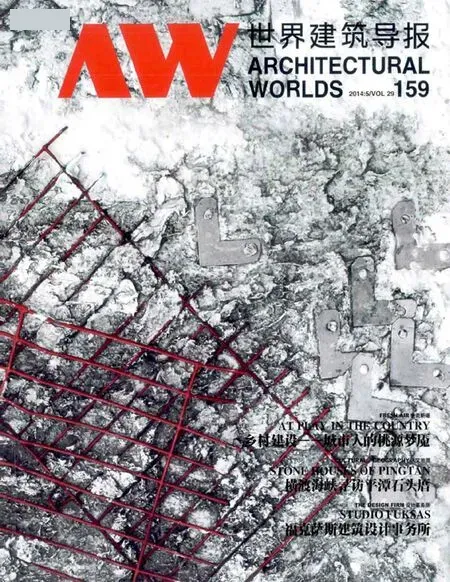双子塔
地点:奥地利维亚纳
时间:1996年-2001年
业主:Immofinanz Immobilien Anlagen AG;Wienerberger Baustoffindustrie AG
建筑师:马希米亚诺·福克萨斯
总面积:139,500平方米
A塔:37层/高138米
B塔:34层/高127米
SITE: Vienna, Austria
PERIOD: 1996-2001
CLIENT: Immofinanz Immobilien Anlagen AG;Wienerberger Baustoffindustrie AG
ARCHITECT: Massimiliano Fuksas
TOTAL AREA: 139,500 sq.m.
TOWER A: n. floors/height: 37/138 m
TOWER B: n. floors/height: 34/127 m
福克萨斯的研究基于为项目找到一个解决方案,倾向于令奥地利首都的地平线更加丰富。首先促成其深刻性,但也意识到一个区域除了完成现有的建筑物,可以自己设定用来识别未来用户的元素。坐落在城市和绿地之间的过渡区域,项目团聚和颂扬主题能从以前的作品中体现出来:城市景观的发展;城市密度和绿地之间的连接与过度;艺术和建筑之间的研究融合和污染;“地景艺术”的干预,特别是南方;城市规模的关乎“伦理”尺度的项目,能够“重读”基础设施系统,与新领域的“可访问性”和“透明性”相协调。
两座塔楼分别为37层和34层,能容纳2,500间一流的办公室,每层占地面积达1,400平方米。这两个建筑是来欢迎那些从南部抵达维也纳的游客。两个闪光的巨人,分别是138米和127米高。它们是“光”,因为它们拥有两个巨大的透明玻璃墙壁,具有无法明确区分的轮廓。它们互相之间不平行也不垂直,但间接由一系列不规则的桥梁在不同的高度连接起来。福克萨斯的意图是给建筑增加活力:“对于那些乘汽车从南部经过这片领域的人,双子塔总是会呈现出一个与众不同的形象。他们永远处于变化之中”。

Fuksas’ research has been based on the desire to pinpoint a solution apt to enrich the skyline of the Austrian capital. In the first place contributing to its profoundness, but also realizing an area that,apart from completing the existing structure, could set itself as an element of identi f cation for future users. Situated in an area of transition between the city and green areas, the project reunites and exalts thematic already found in previous works: the development of urban landscape; the connectiontransition between urban density and green spaces; the researched confluence and contamination between art and architecture; the "Land Art" interventions, in particular in the South square; the "ethic"dimension of the project on urban scale that could "re-read" the infrastructural system in keys of"accessibility" and "transparency" of the new area.
The towers, that have respectively 37 and 34 floors, house 2500 first class of fices and each floor is spread over an area of 1400 sq.m. The two buildings welcome those who arrive in V ienna from the South. Two light giants, 138 and 127 meter high. They are “light” because they are put into two huge transparent glass walls, with outlines that cannot be distinguished. They aren’t parallel nor perpendicular, but put obliquely to one another, connected by a series of bridges irregularly positioned at various heights. Fuksas' intention was to give dynamism to the construction: "... for those arriving from the South and running along this area by car, the towers always occur with a different look. They’re never still or incumbent".




